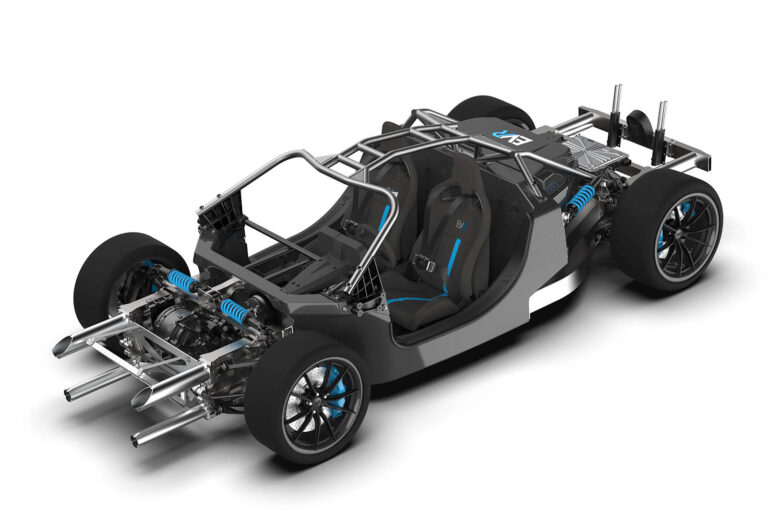There are multiple EV skateboard-style platforms on the market aimed at aspiring passenger vehicle manufacturers. However, for those looking to create a high-performance, sports-car-type vehicle, the options are more limited. Williams Advanced Engineering recently unveiled what it hopes will be a popular solution for those in search of a more sporting drive – its modular EVR concept.
Skateboards might be a great solution for regular passenger cars, but placing the battery in the vehicle floor – as Chris McCaw, WAE’s technical lead and senior integration engineer on the EVR project explains – means they are less than ideal for sports car applications. WAE has already produced a skateboard system, the EVX, and McCaw says the EVR is “very much a sister product”. However, while the EVX is a solution for SUVs and other luxury vehicle types, the EVR targets a very different segment.
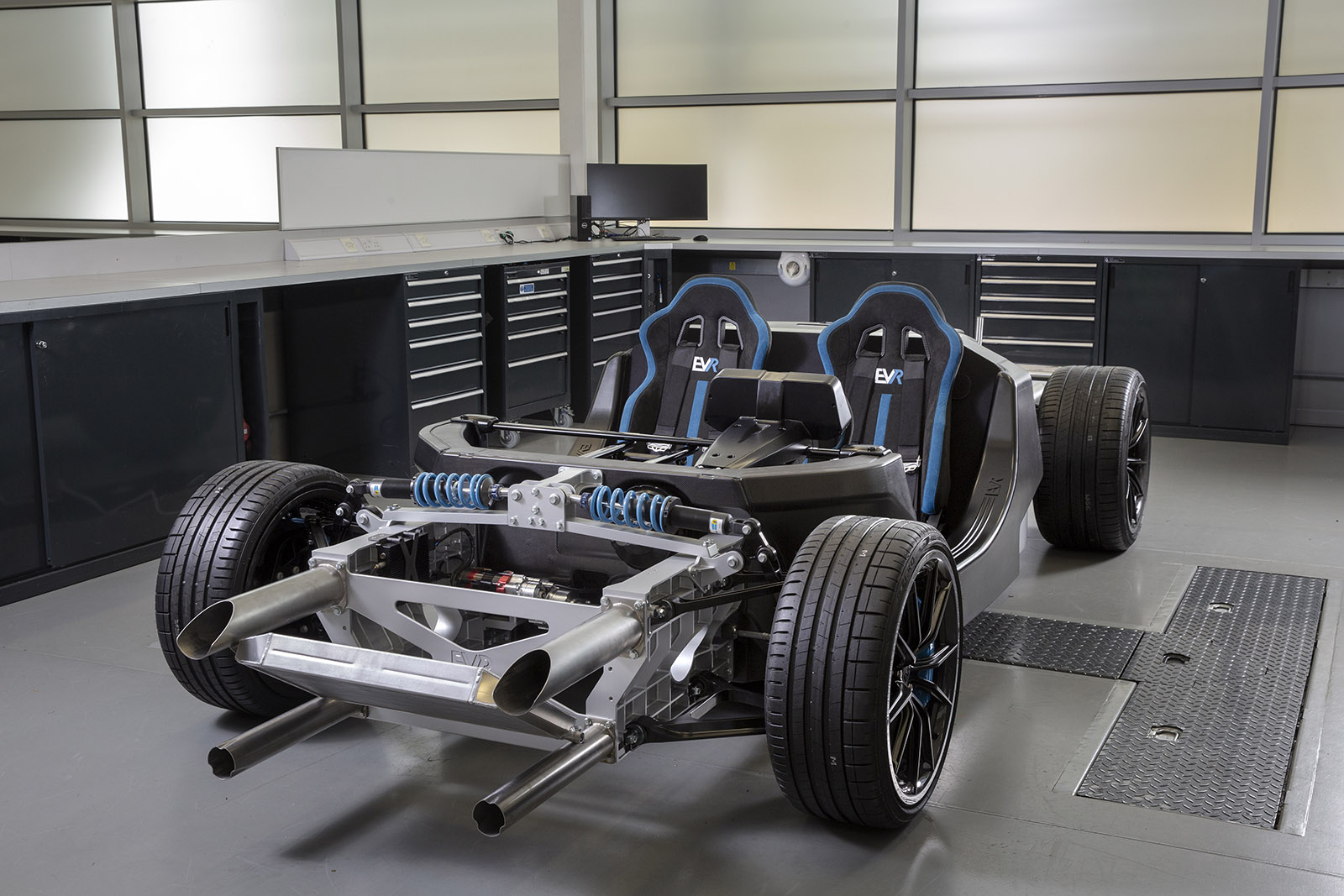
McCaw explains, “If we consider the spectrum of vehicles that we sell, everything from track cars and hypercars through to your giant SUVs, the EVR sits very much at one end of it, with the focus on getting the H-point [hip-point] very low.” This last goal is complicated to achieve with a traditional skateboard due to the batteries-in-floor design. “The H-point determines the low roofline and dictates the driving feel that people want. So you end up with the architecture of the EVR, with the battery sitting behind the occupant rather than underneath them,” notes McCaw. “We marry that layout nicely with very high-performance powertrain technology, to give you something that sits in that sub-1.9-second 0-60 territory, which seems to be de rigueur these days.”
Powertrain options
The EVR was designed from the outset to accommodate almost every electrified powertrain combination imaginable, including a fuel cell (see H2 ready, above). The prototype that WAE recently presented to the public features rear drive only, with twin motors and no mechanical differential, relying on the motors to provide torque vectoring. “We see that as the starting point,” says McCaw. “You could then add a single motor at the front with a differential, which gives you all-wheel drive, but only torque vectoring at the rear. Then the third solution, for ultimate performance, is a twin motor drive unit at the front, giving torque vectoring independent over all four wheels.” He quips that although WAE tends to refer to the platform as powertrain agnostic, “That makes it sound a bit like we haven’t done anything, and we can use anything.”
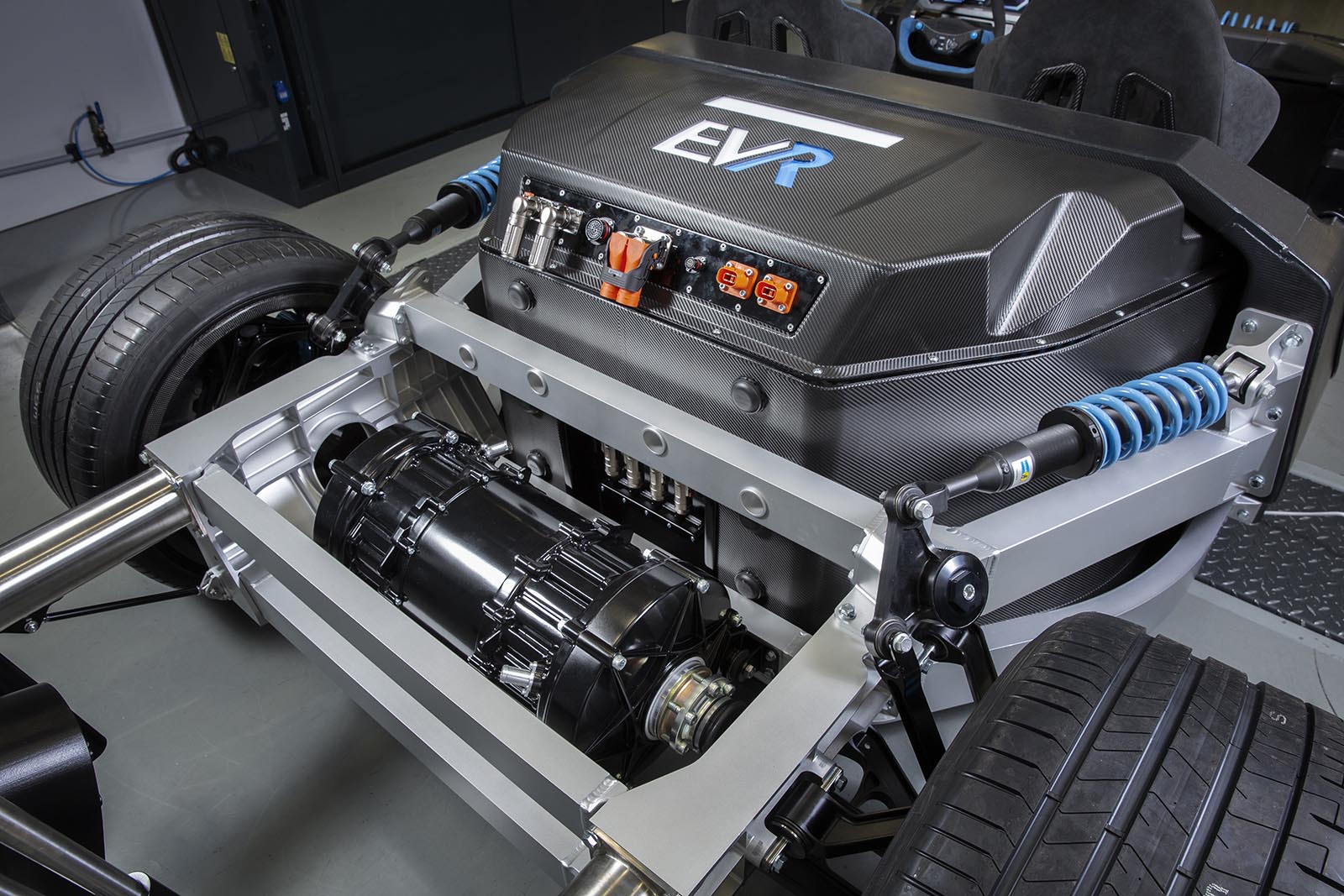
In reality, for both the EVR and EVX, McCaw and his team worked with three or four suppliers capable of delivering powertrain options that provided the required performance levels. WAE, of course, has its own in-house design and development capabilities for all these components as well. The exact choice of motor, inverter, etc, is decided on with the end customer, to match the intended end use of the platform, be that a track special or an exclusive hypercar.
“If a client is particularly averse to using a [package from a] relatively new startup organization, we can use a well-established supplier – very risk-free, but maybe not the bleeding edge of performance. Another option could be the absolute cutting edge [of technology], the one you use if you want to be better than everybody else,” says McCaw. WAE has also considered potential future customer requirements for the use of multispeed transmissions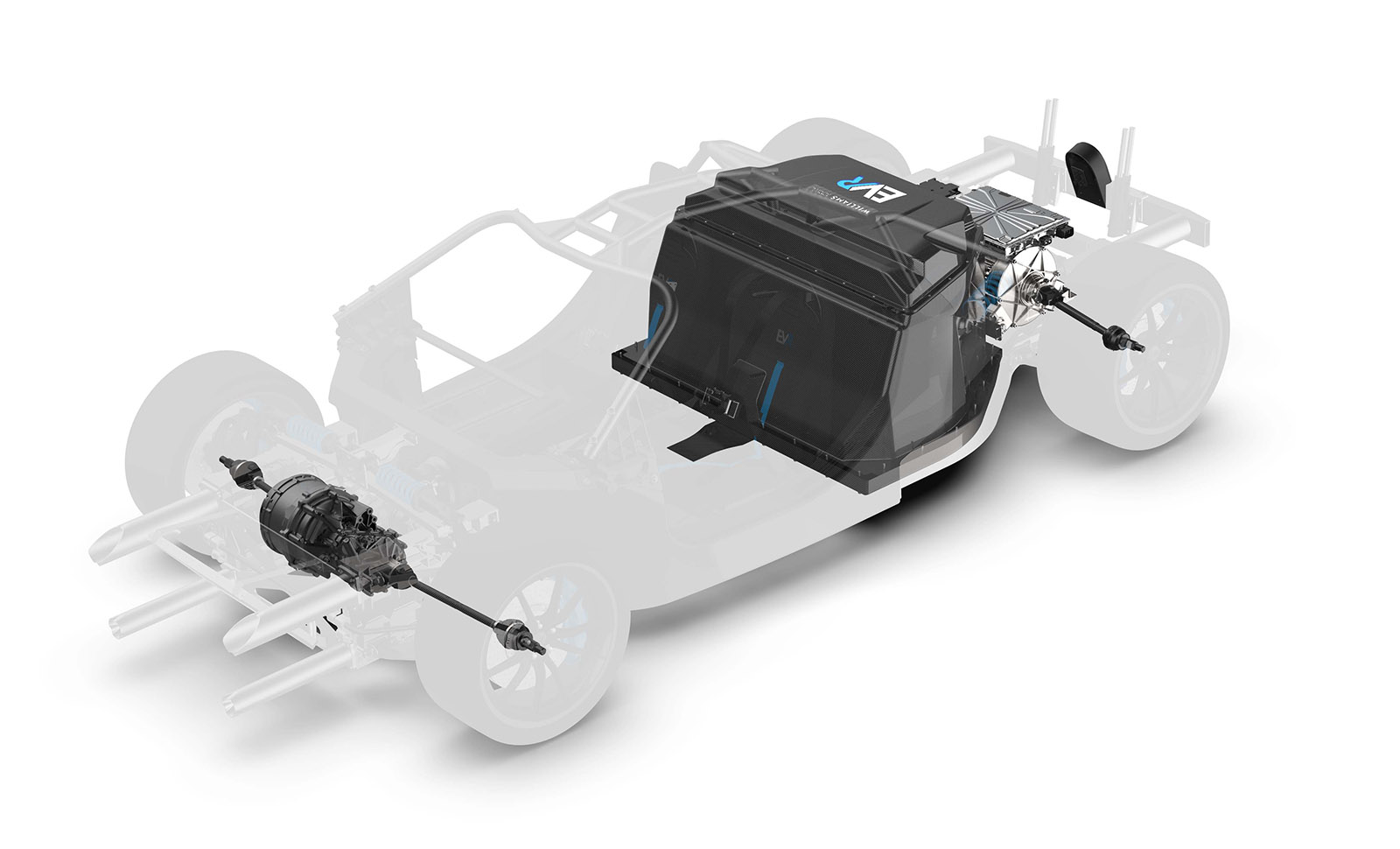 McCaw points out that the motors in the initial prototype are capable of very high-speed running. “That means we can hit our 350km/h speed target without needing a second gear. But we are also conscious that in order to hit higher speeds, you’re going to need a 2-speed, so we are working on a particularly compact 2-speed solution that works with the architecture as well.” Central to the EVR concept is the battery pack, situated behind the tub and forming a structural element of the chassis. Rated at 85kWh, the pack uses 21700 cylindrical cells and is based on a well-established design that WAE has developed further. “We’re very familiar with it and we’ve already done a significant amount of development work using the pack, which means that putting it into a vehicle such as this is very risk-free,” says McCaw. He highlights that by developing a pack and chassis together, rather than placing WAE’s own pack in another manufacturer’s chassis, it is possible to create a far better optimized structural solution. “We’ve been able to take some of the benefits of what we know our pack can do, and the structural influence that can have, and build a platform around it.”
McCaw points out that the motors in the initial prototype are capable of very high-speed running. “That means we can hit our 350km/h speed target without needing a second gear. But we are also conscious that in order to hit higher speeds, you’re going to need a 2-speed, so we are working on a particularly compact 2-speed solution that works with the architecture as well.” Central to the EVR concept is the battery pack, situated behind the tub and forming a structural element of the chassis. Rated at 85kWh, the pack uses 21700 cylindrical cells and is based on a well-established design that WAE has developed further. “We’re very familiar with it and we’ve already done a significant amount of development work using the pack, which means that putting it into a vehicle such as this is very risk-free,” says McCaw. He highlights that by developing a pack and chassis together, rather than placing WAE’s own pack in another manufacturer’s chassis, it is possible to create a far better optimized structural solution. “We’ve been able to take some of the benefits of what we know our pack can do, and the structural influence that can have, and build a platform around it.”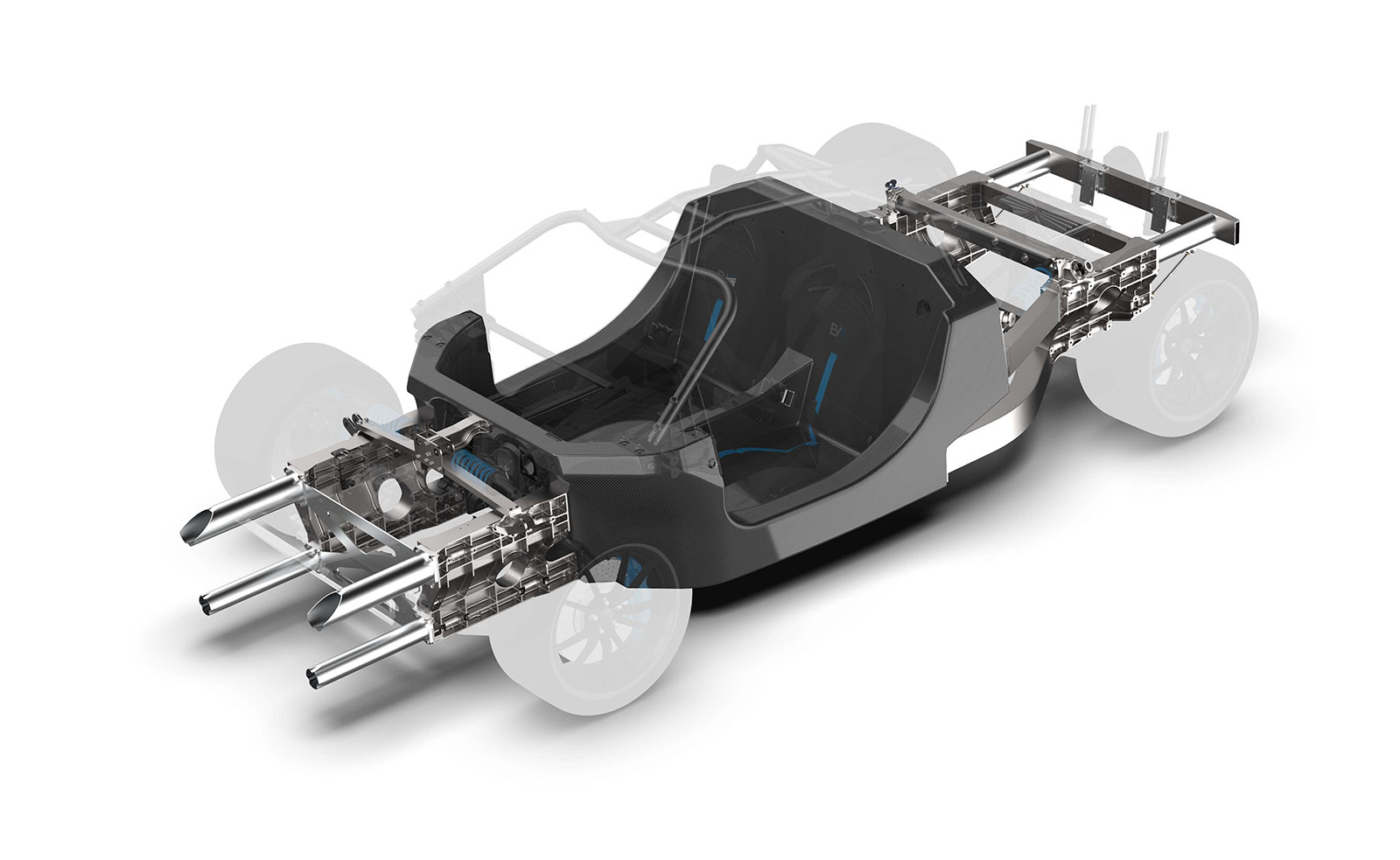 Platform flexibility
Platform flexibility
The USP of the EVR is flexibility (both in terms of the physical platform and WAE’s in-house capabilities) to allow a manufacturer to develop a vehicle concept without having to start from scratch. “For example, maybe a customer wants to step up [from more mundane] products, or wants to launch a halo vehicle or reinvigorate a brand but can’t afford to take something from a blank sheet of paper,” suggests McCaw. Alternatively, the customer may have no shortage of resources but wants to develop a new vehicle more quickly than usual.
According to McCaw, the EVR caters for each of these scenarios. He also points out that if someone is selling a multimillion-dollar EV hypercar, the last thing they want is for it to appear like a reskinned version of someone else’s car. “They want to feel like it’s something unique to them. So we’ve designed this platform so that most of the engineering that will be carried over from one customer to another is already developed, but if they need unique sill sections or want to change the wheelbase and track to suit their styling vision, that can be accommodated within this product.”
To facilitate this flexibility, the composite central tub and front and rear subframes are engineered so that elements can be revised without requiring a ground-up redesign. “You’ll see split lines around the tub that demonstrate how this has been done by using a jigsaw of pre-molded modules rather than a single tool tub, which is the other approach. And we’ve gone with metallic front and rear structures, and then a metallic roll cage, which provides flexibility of the roofline or the front and rear chassis, without having to retool the composite part,” says McCaw. On WAE’s demonstrator, these front and rear elements are machined, and are designed in such a way that if the volume demanded it, they could be cast. These structural elements also mean that differing powertrain packages can be adapted cost effectively, and importantly, additional mass.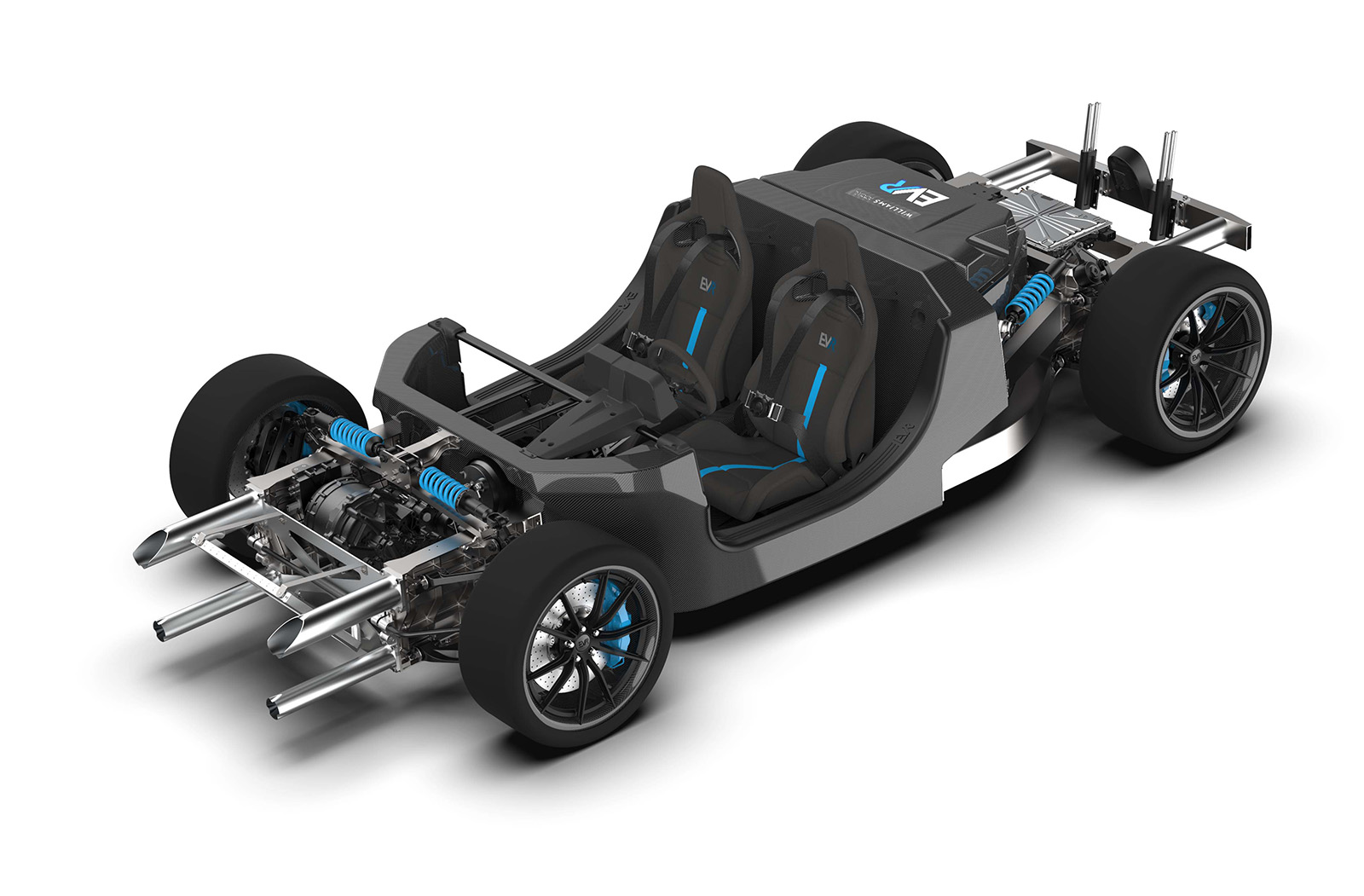
Brand ID
WAE is pitching the EVR as a solution for anyone from a well-established manufacturer to a small-volume startup. It suggests five levels of platform development that can be completed for customers. At one end of the spectrum, it can provide just a powertrain, with the battery, EDUs and control electronics. At the other, level five, a completely finished vehicle, replete with bodywork and full type approval.
In between are varying levels of integration centered around the core vehicle architecture. “For example, [a customer] may have their own in-house styling team or they may have their own in-house electrical architecture that they want to incorporate,” explains McCaw. “That would let them achieve a consistency of look and feel for their vehicle compared with their brand. And they may want to actually develop the vehicle and build it themselves.”
The EVR platform provides the starting point, shaving 12-18 months off the development time compared with starting from scratch. This timeframe obviously depends on the intended use of the finished vehicle and its target market. “You are looking at EU small series, or China homologation, being a three-year program,” says Dyrr Ardash, head of strategic partnerships at WAE. “If you are looking at UK single-series homologation, we believe we can get a track-only product ready in 18 months. Turning it into a single vehicle-approved solution isn’t significant, because fundamentally the engineering, has already been done to achieve that.”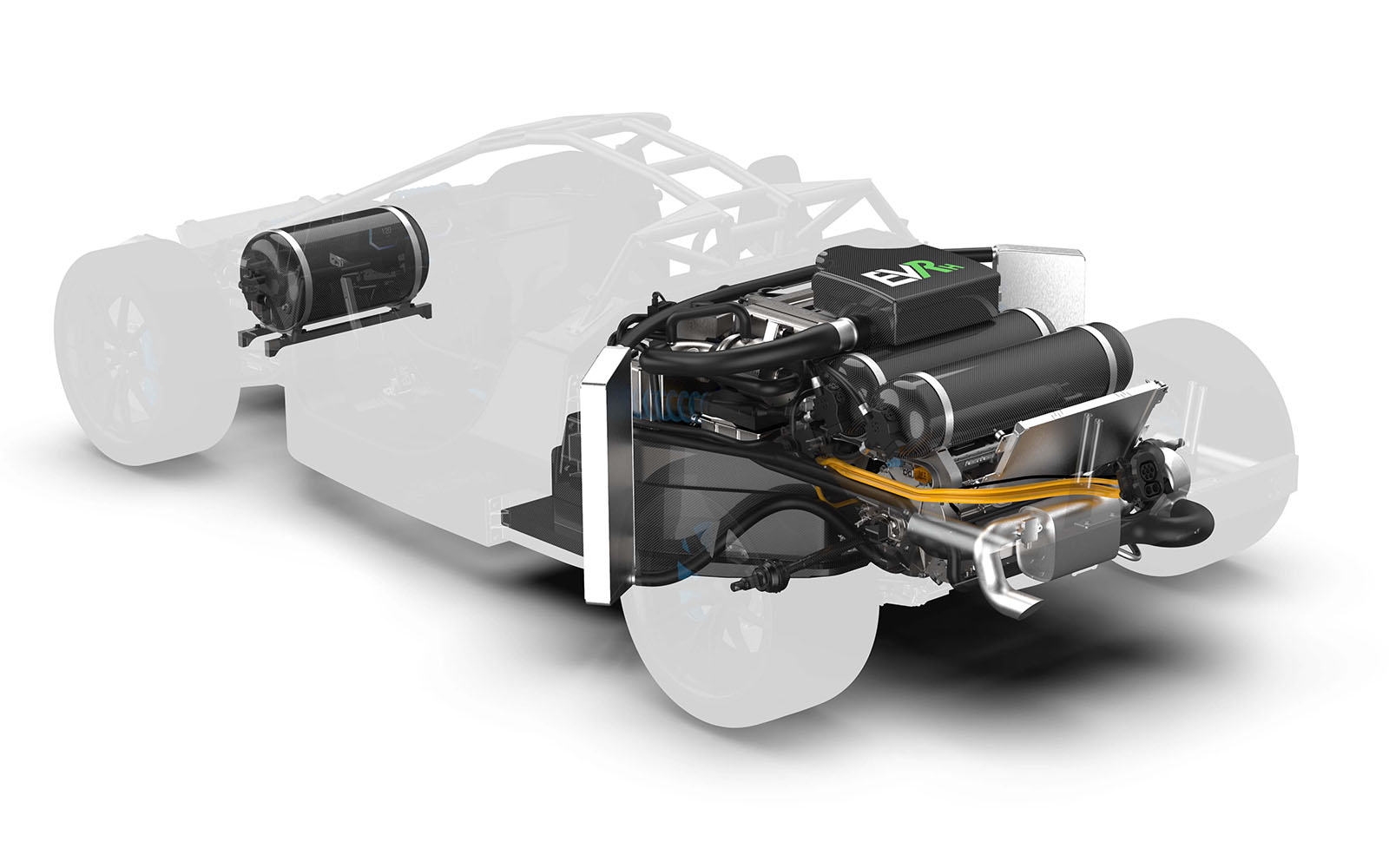
Hydrogen ready
WAE is not blind to the fact that BEV is not the only game in town and that hydrogen fuel cell EVs remain of considerable interest. It was therefore logical to develop the EVR with H2FC in mind. “We’ve got the digital package all designed and ready to go at this point, with basically a fuel cell range extender,” says McCaw. This integrates a 100kW fuel cell with a 45kWh battery, with the battery halved in size compared with the BEV variant. This enables the fuel cell stack to sit atop the battery at the rear of the car. “The hydrogen fuel tanks are then split between the front and rear of the car,” continues McCaw. “In that particular configuration, we have chosen to go with a two-wheel old drive version and use a space where the front e-drive would be to house another 100-liter hydrogen tank to
boost the range up to 550km.”

